site search
online catalog
CAPTAIN’S FROCK COAT, TROUSERS AND SASH OF FREDERICK SCHUMACHER 6th WISCONSIN; LATER KIA AS MAJOR 21st WISCONSIN AT PERRYVILLE
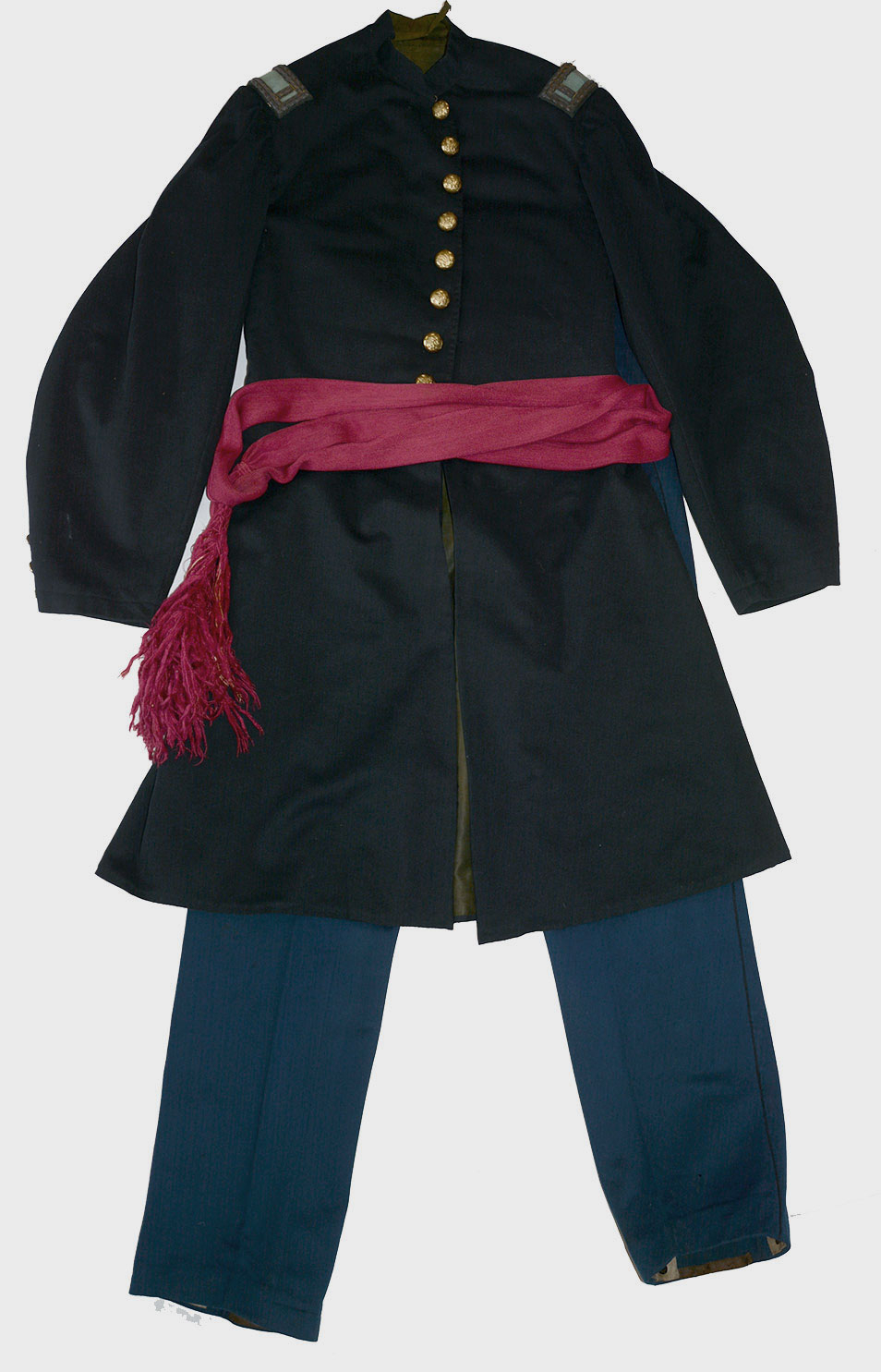
Hover to zoom

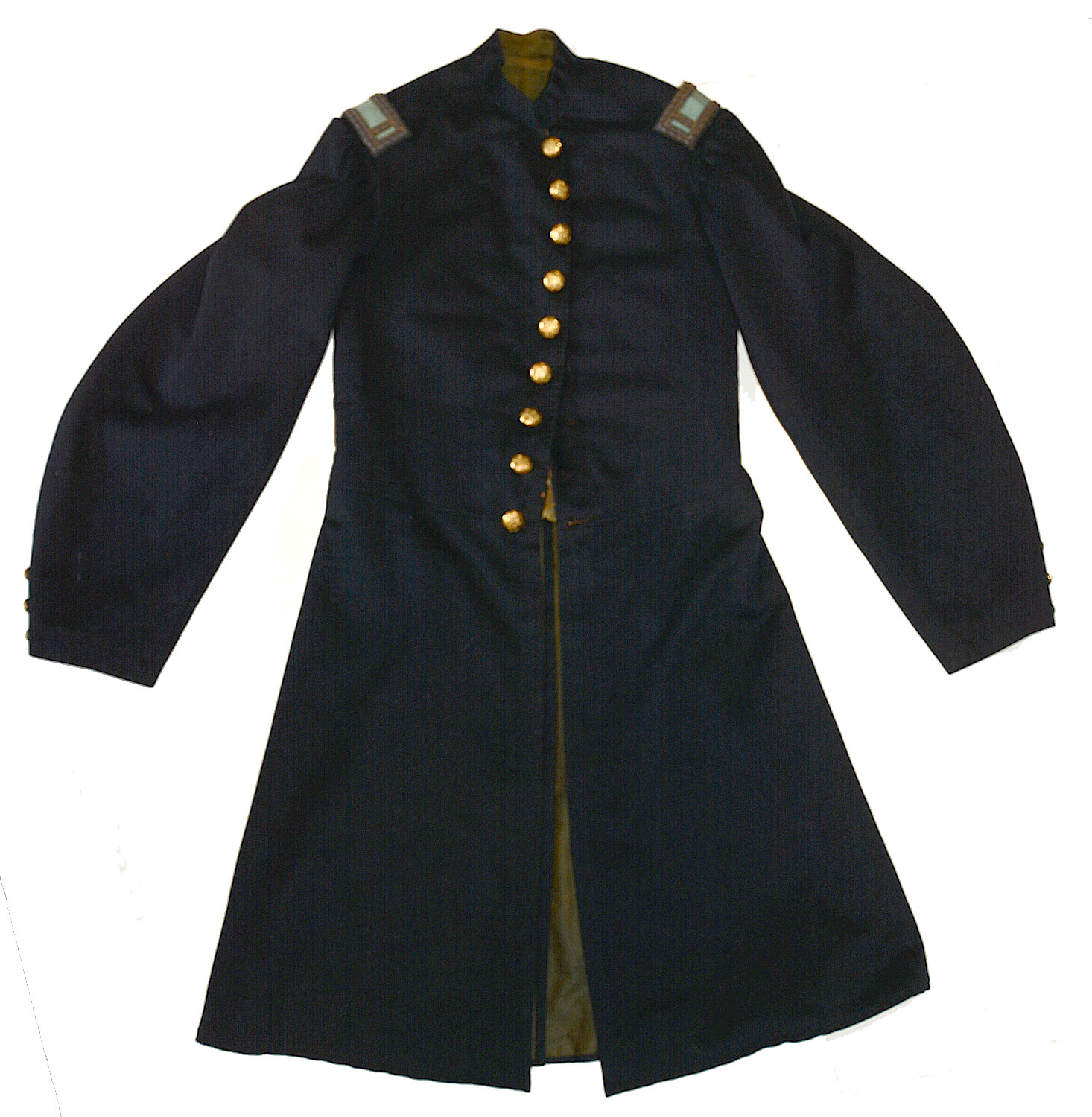
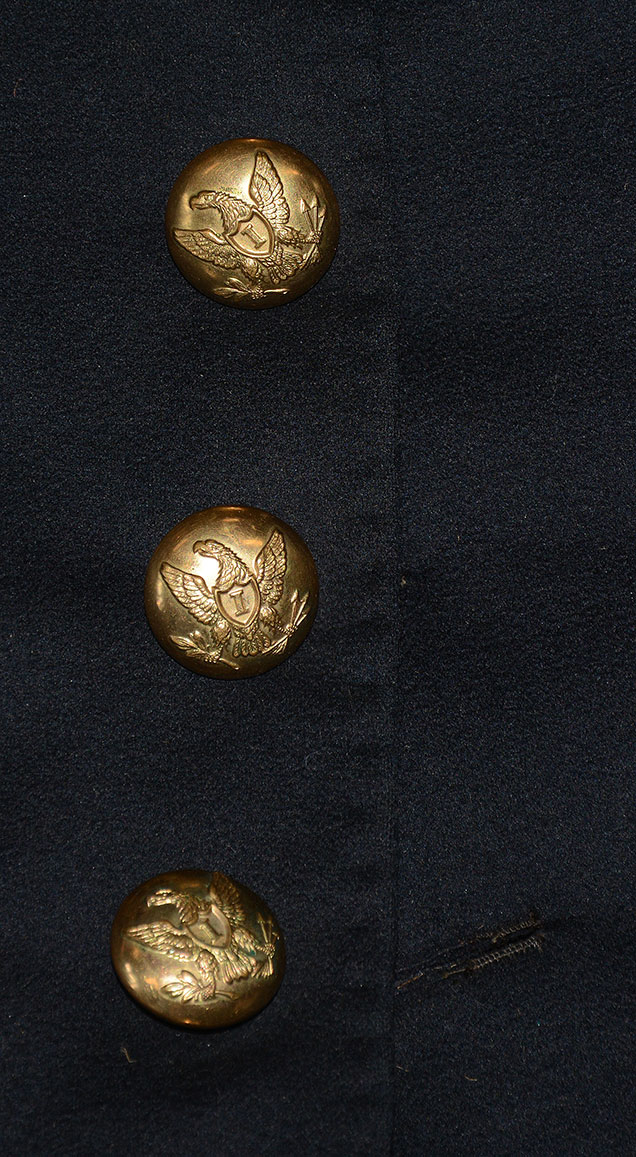
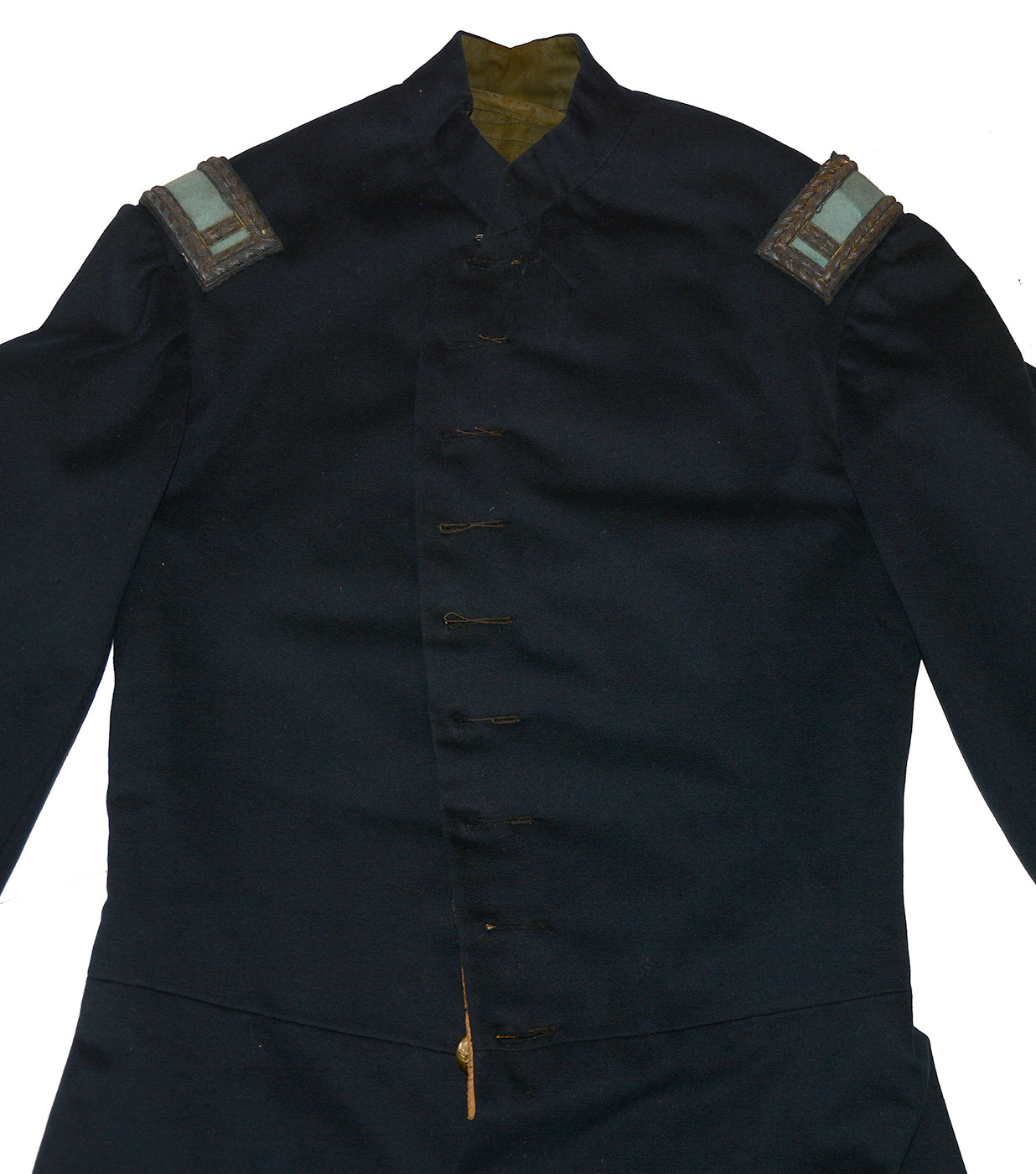
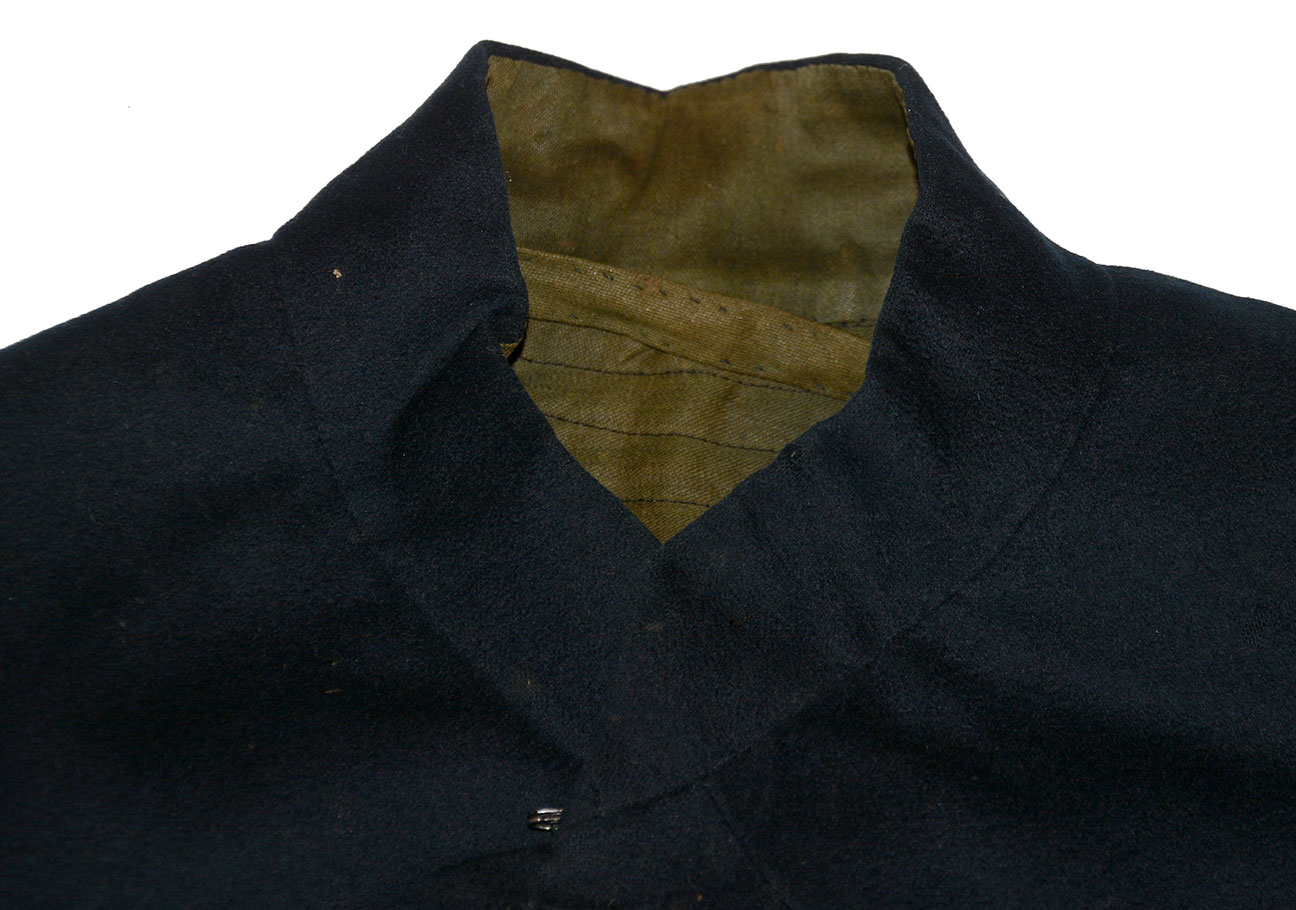
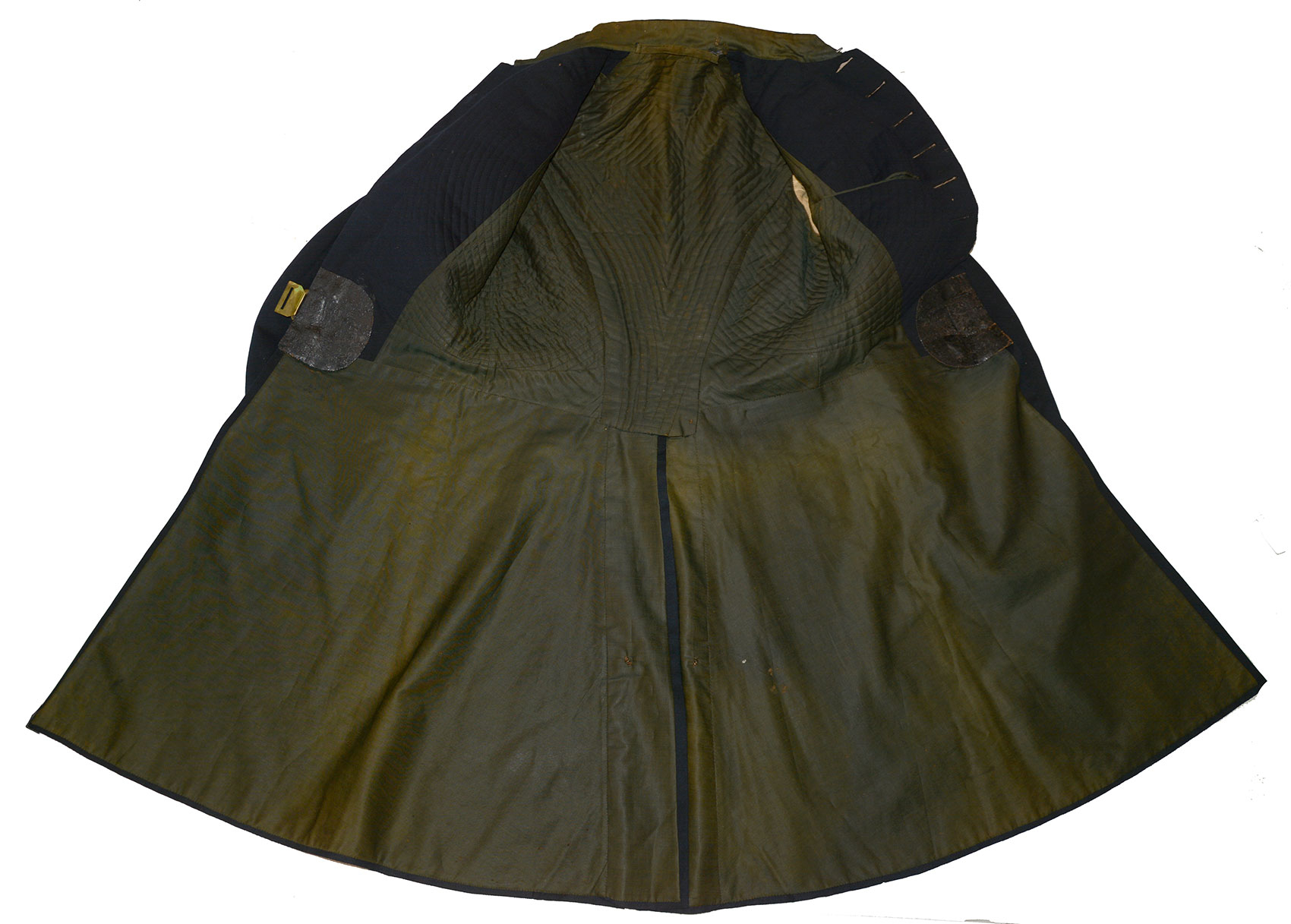
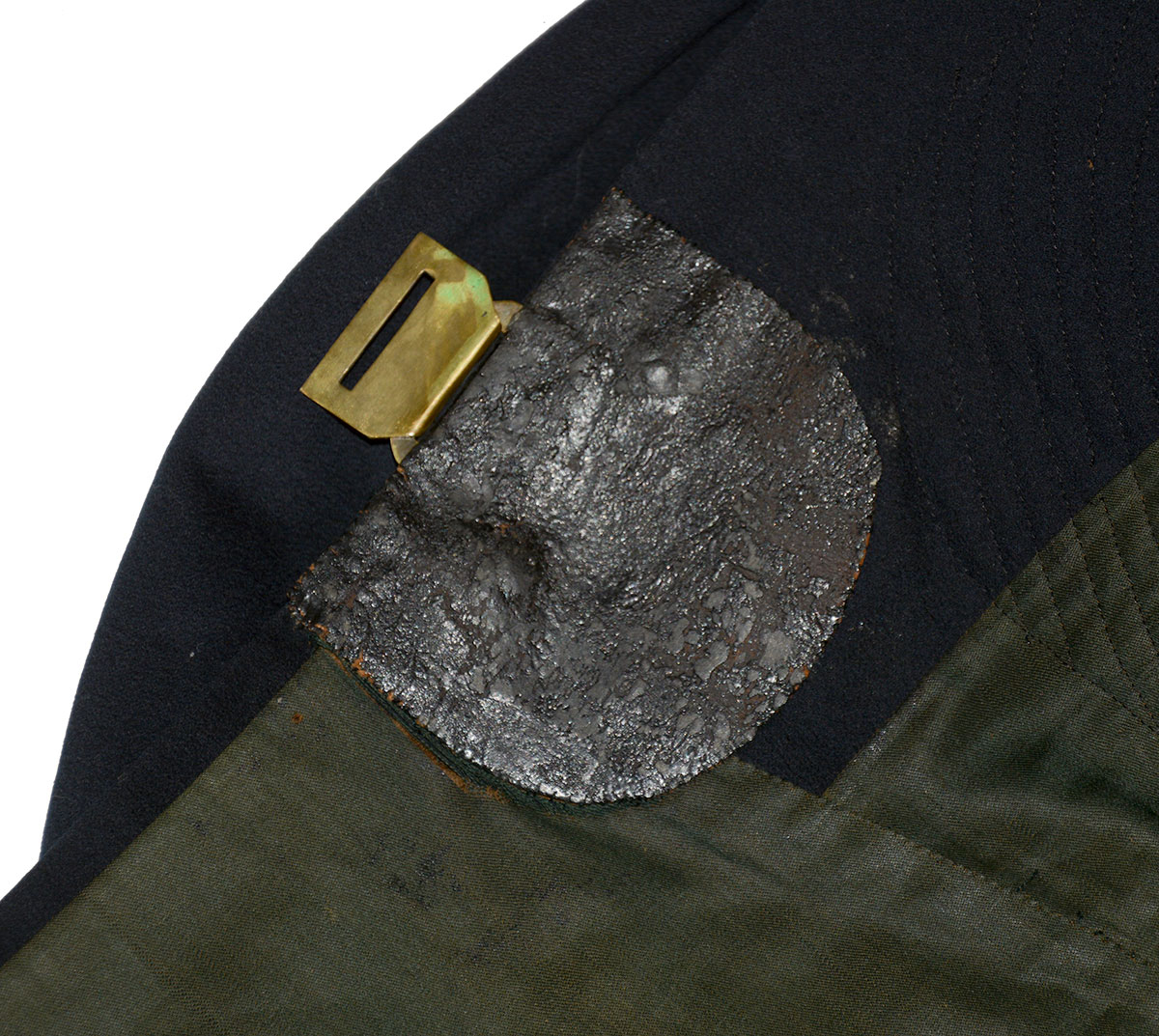
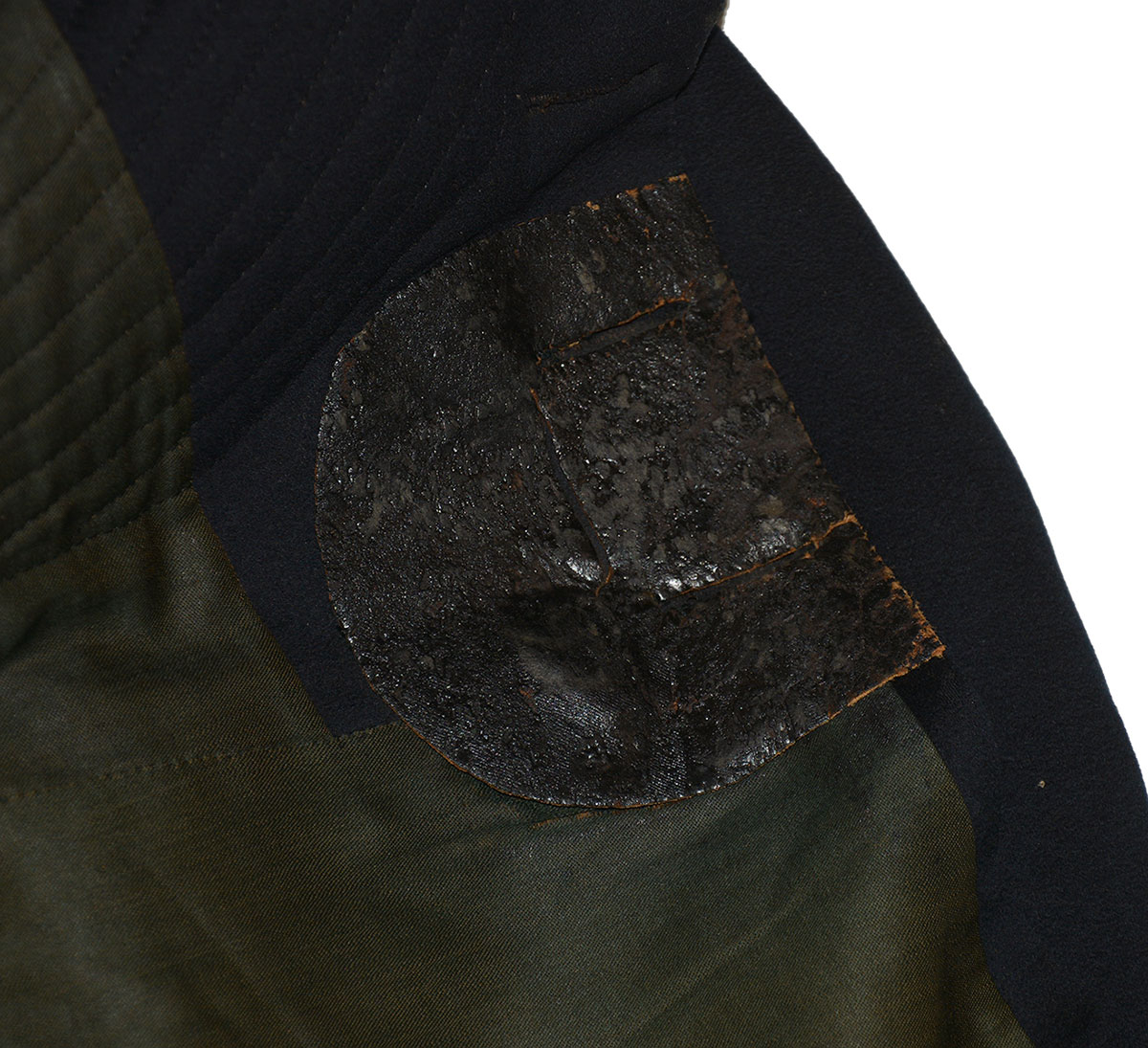

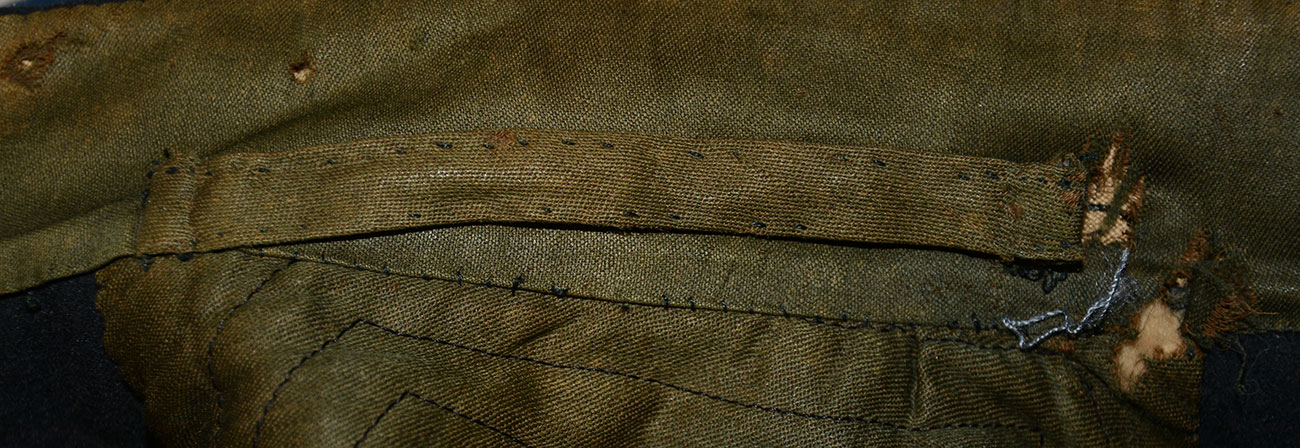
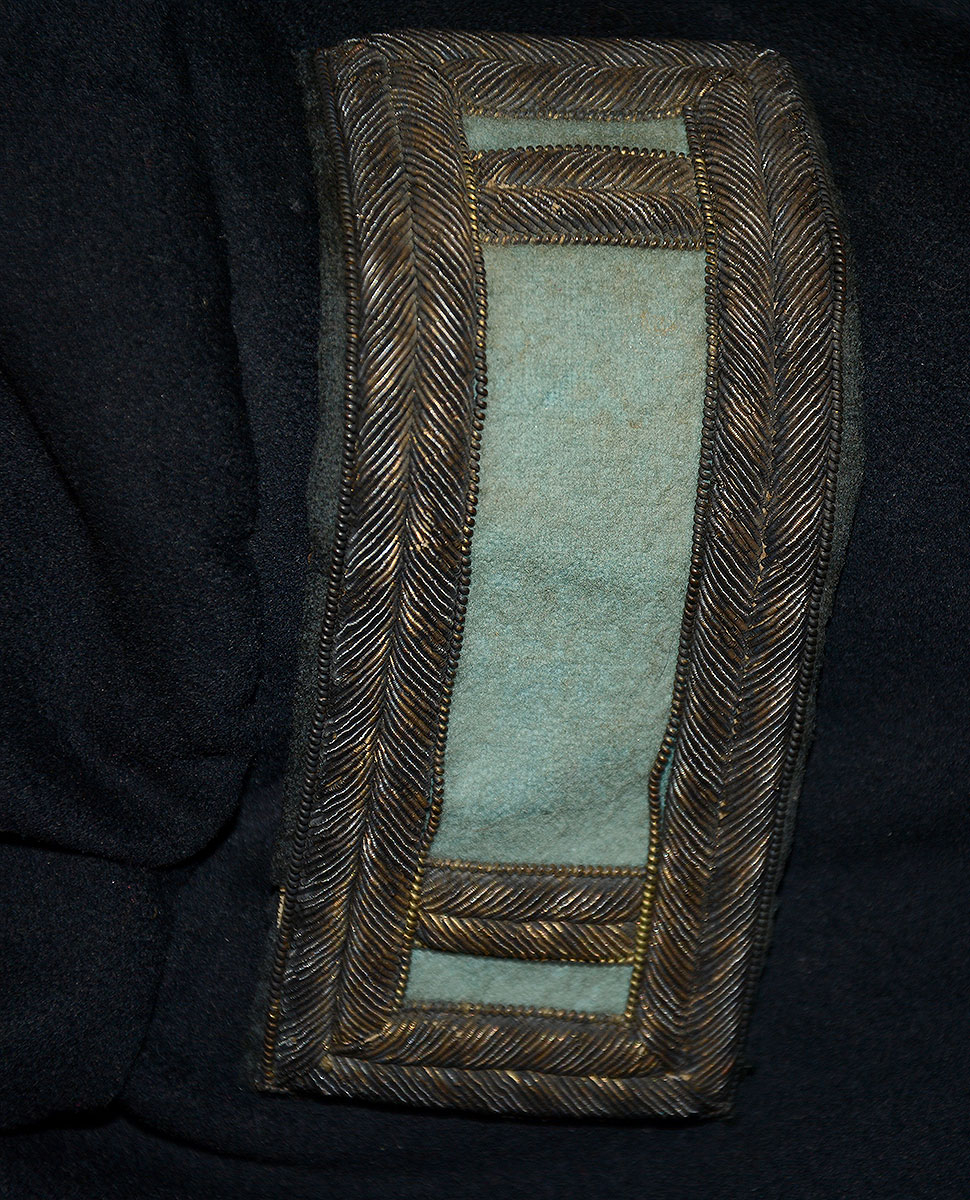
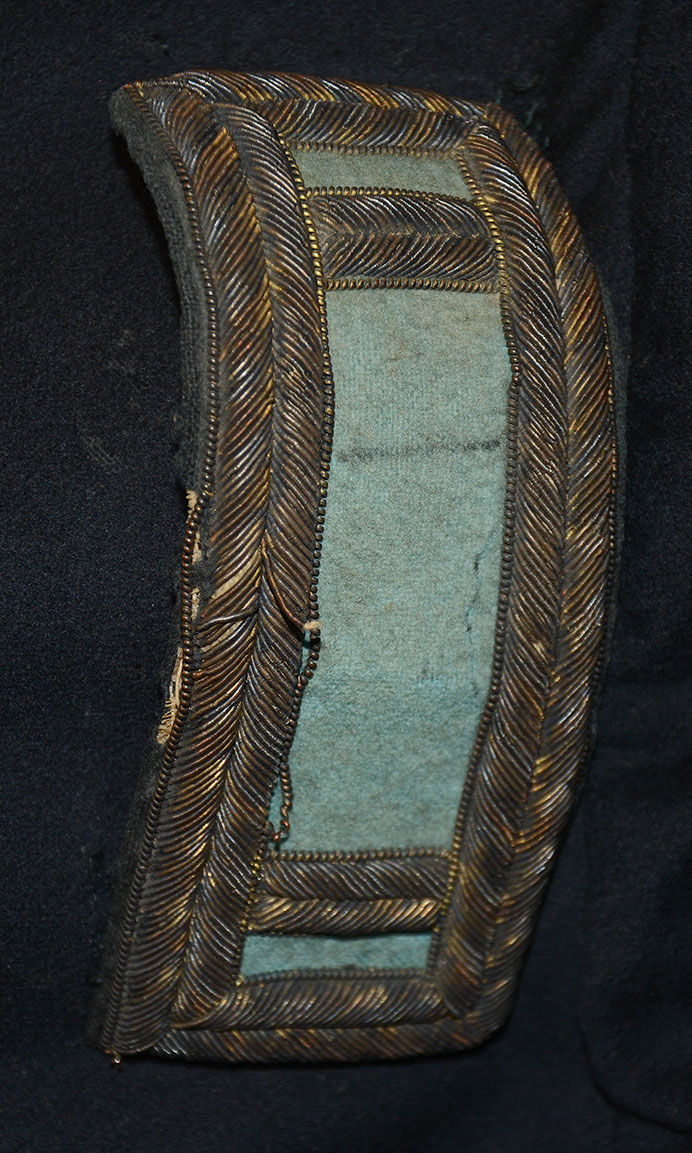
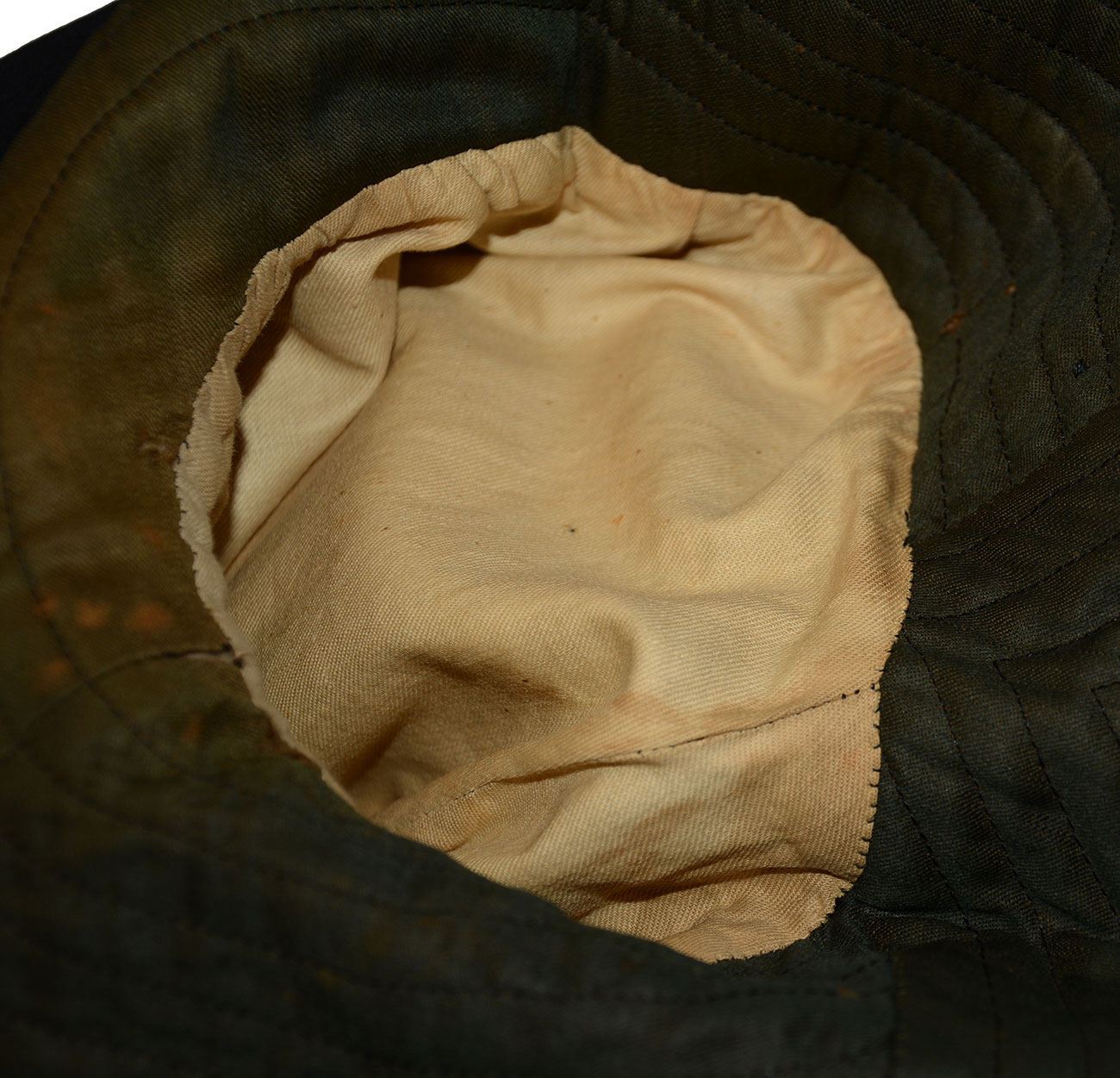
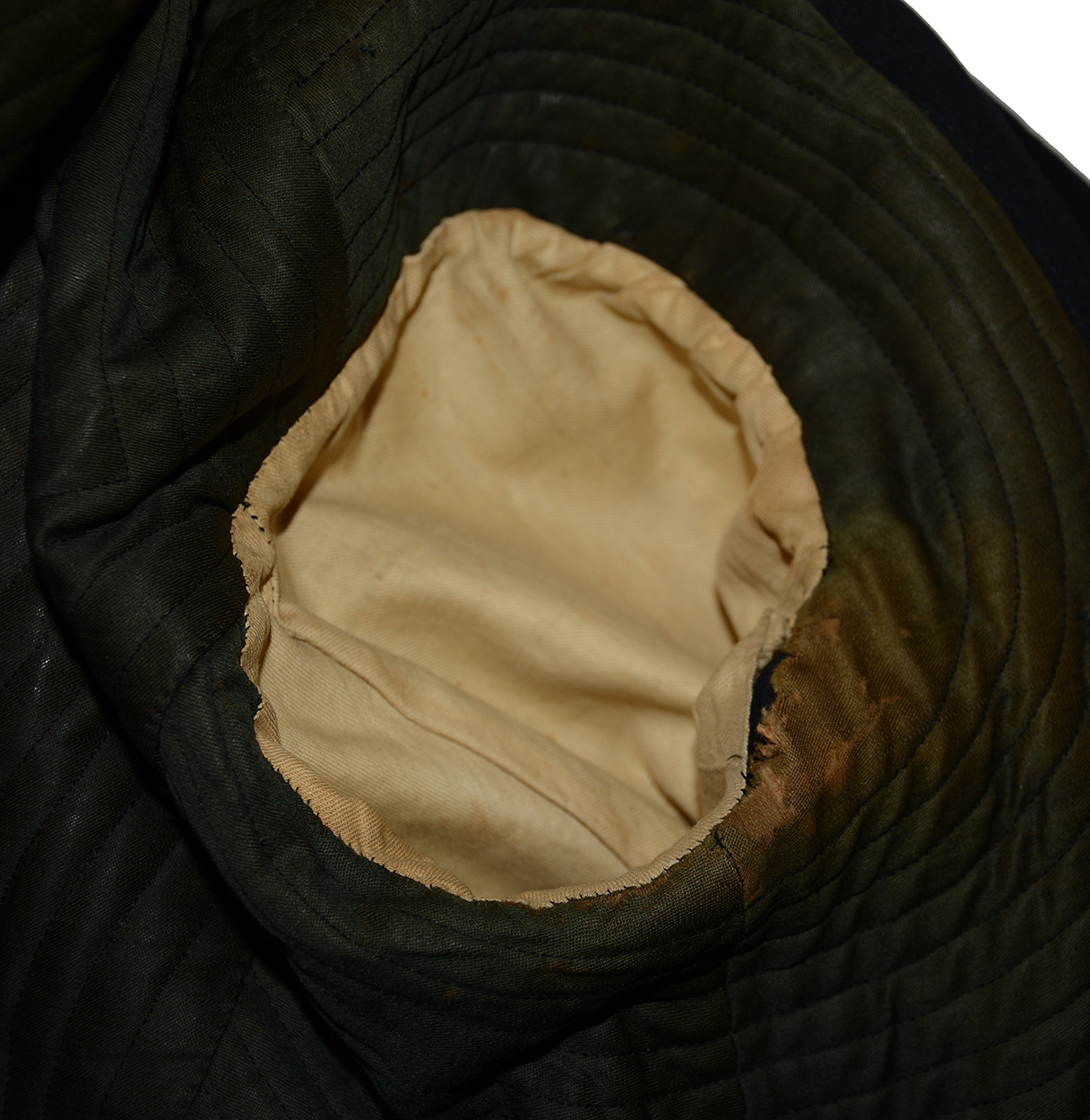
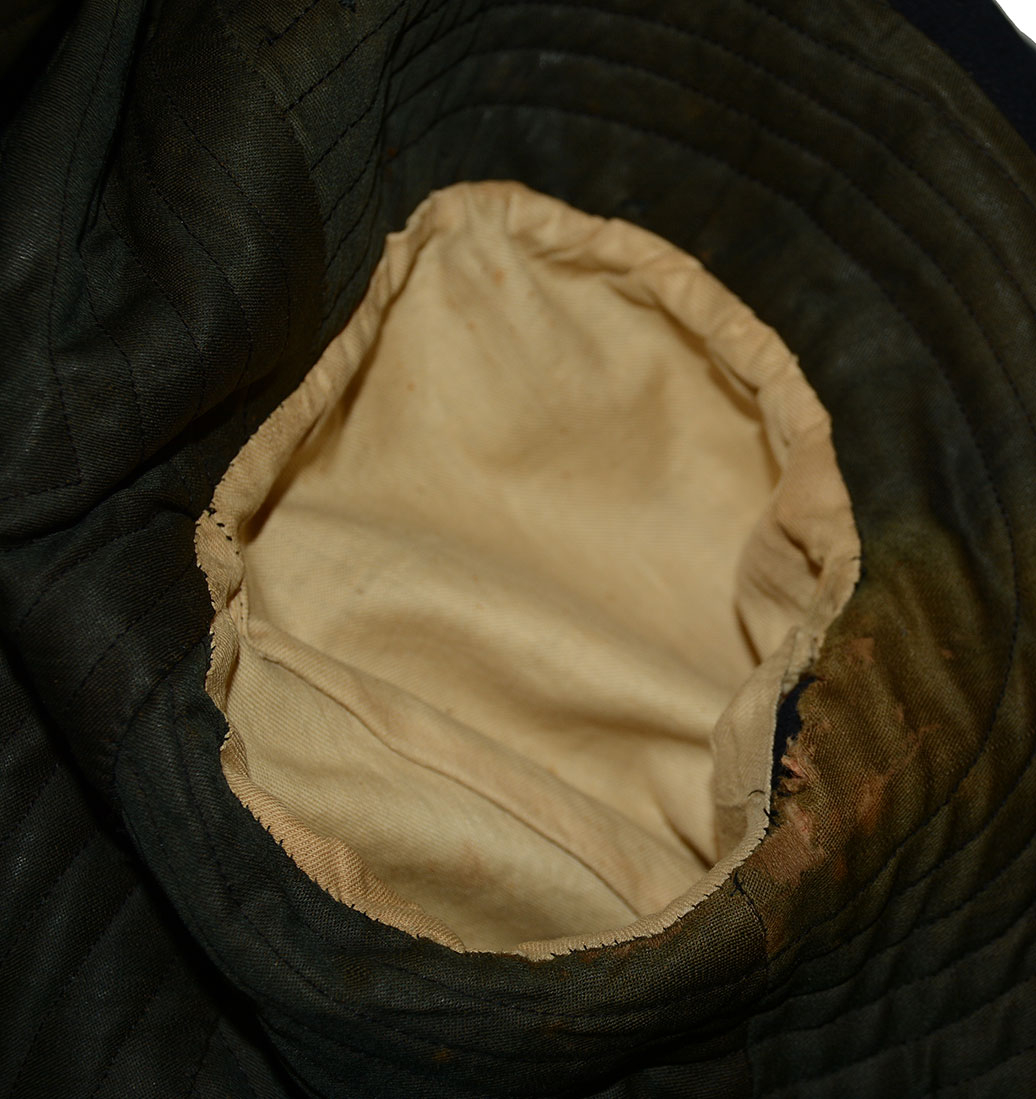
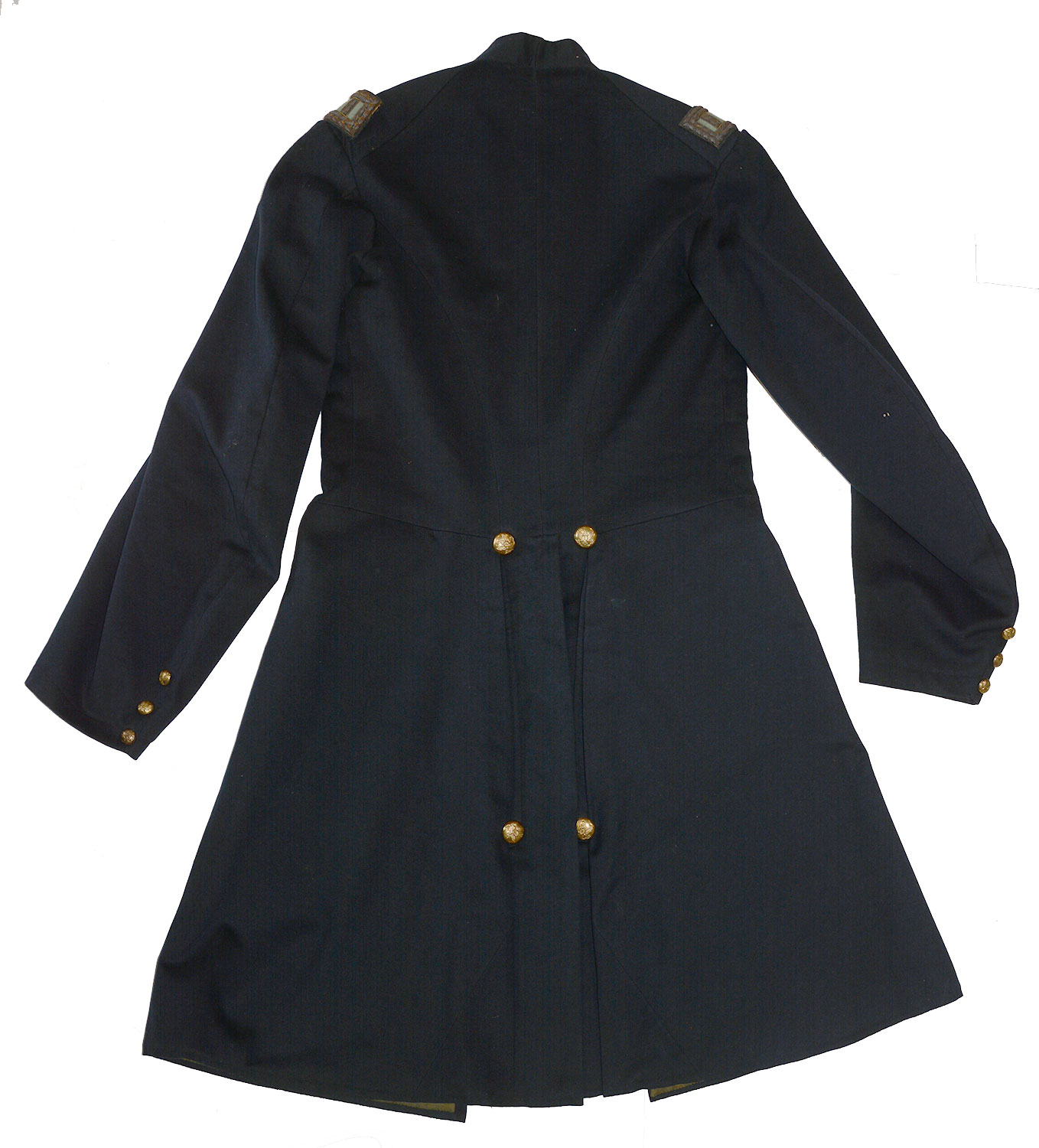
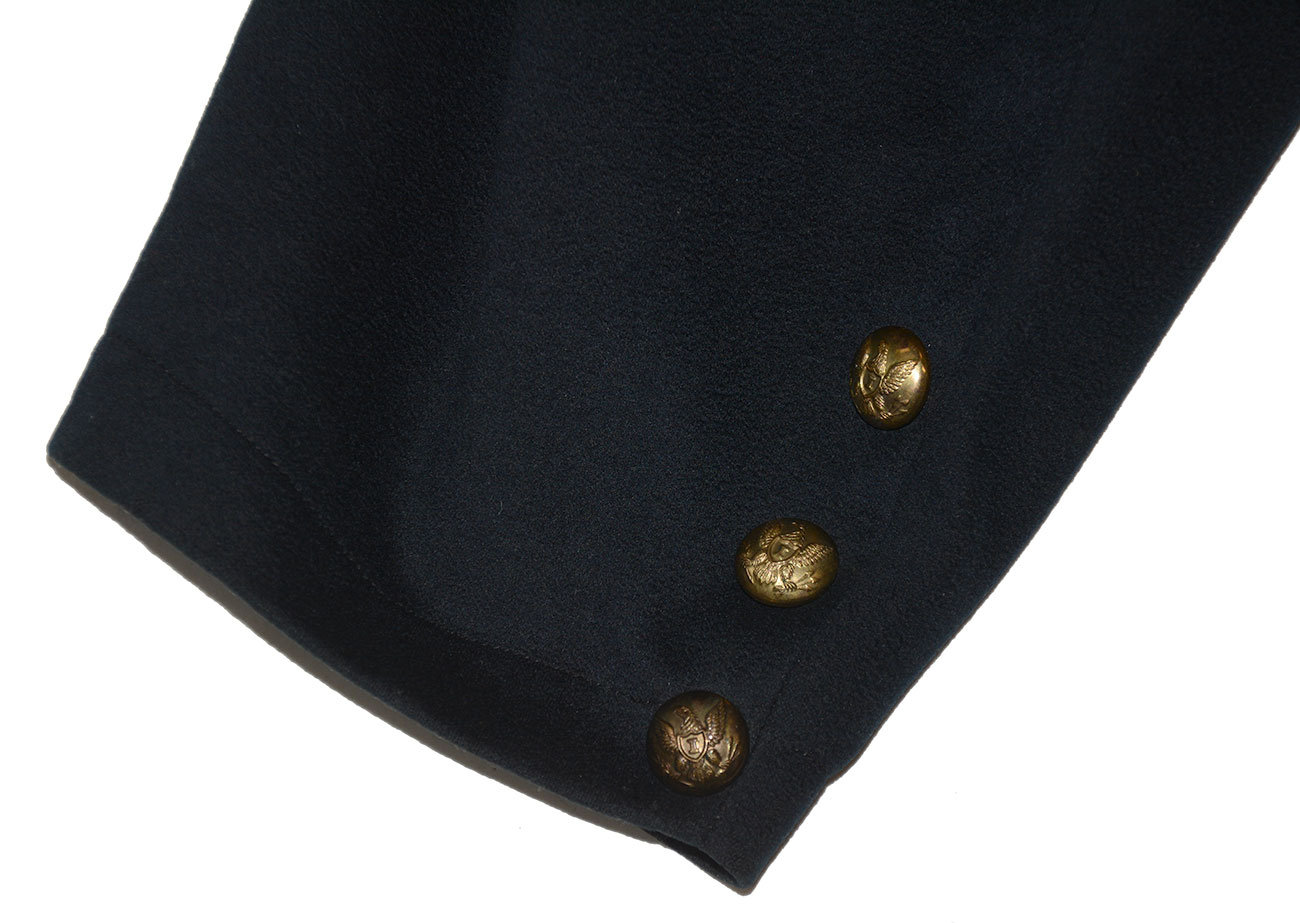
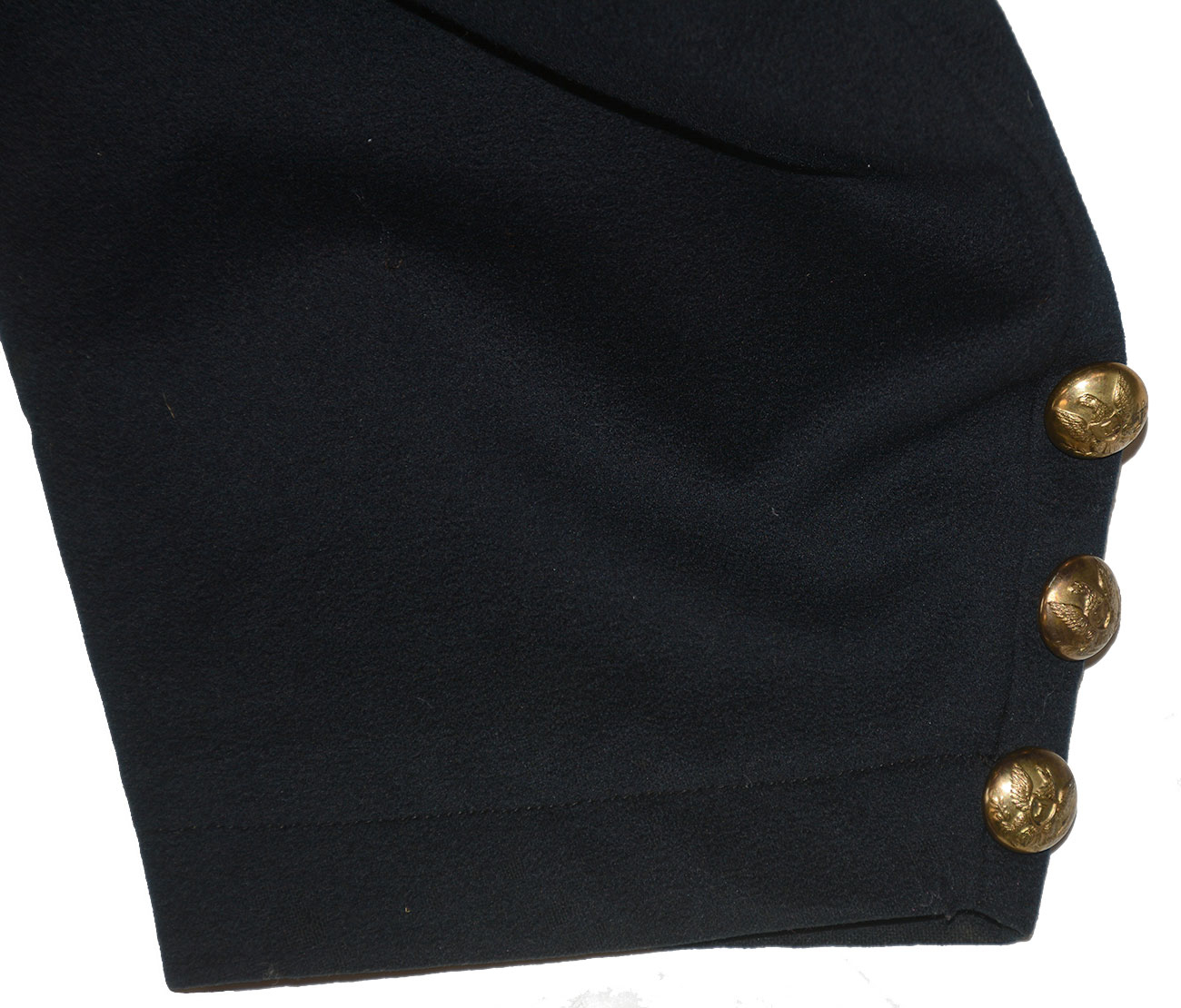
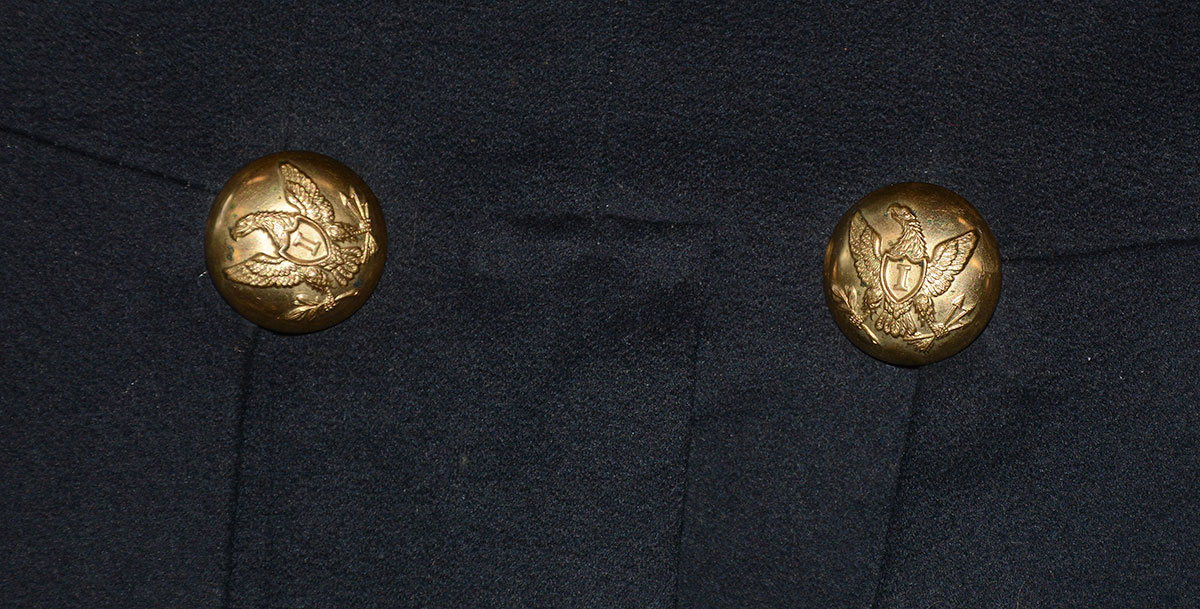
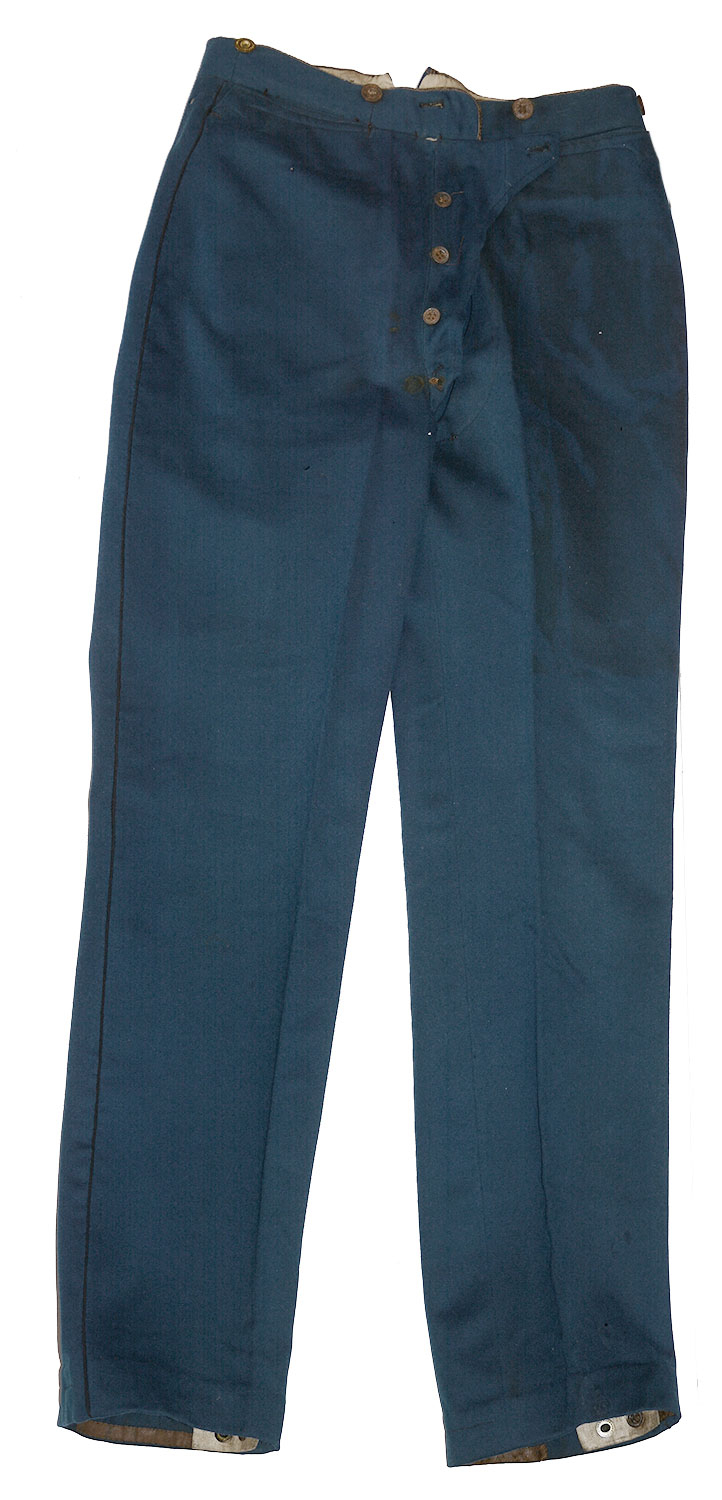
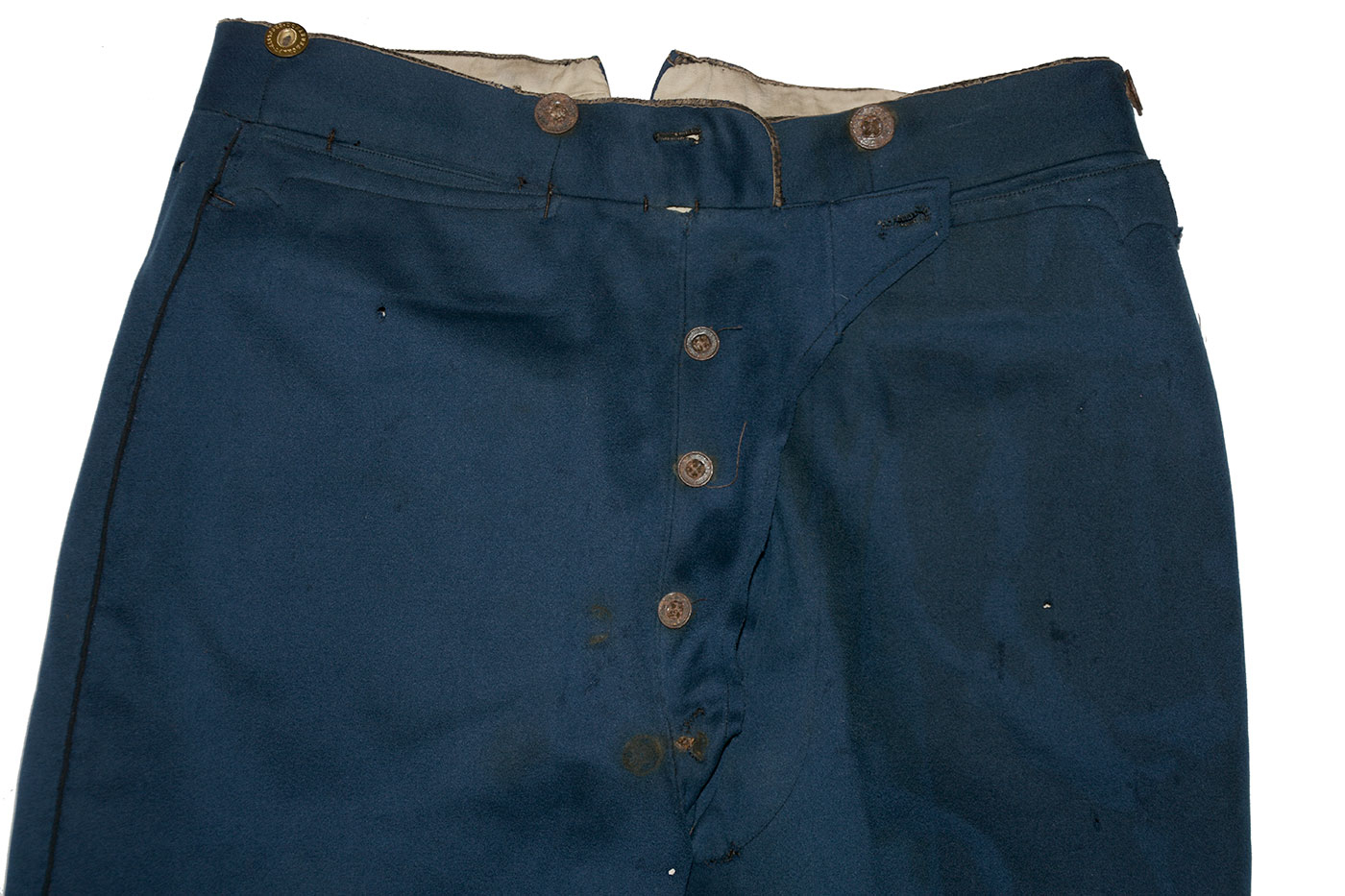
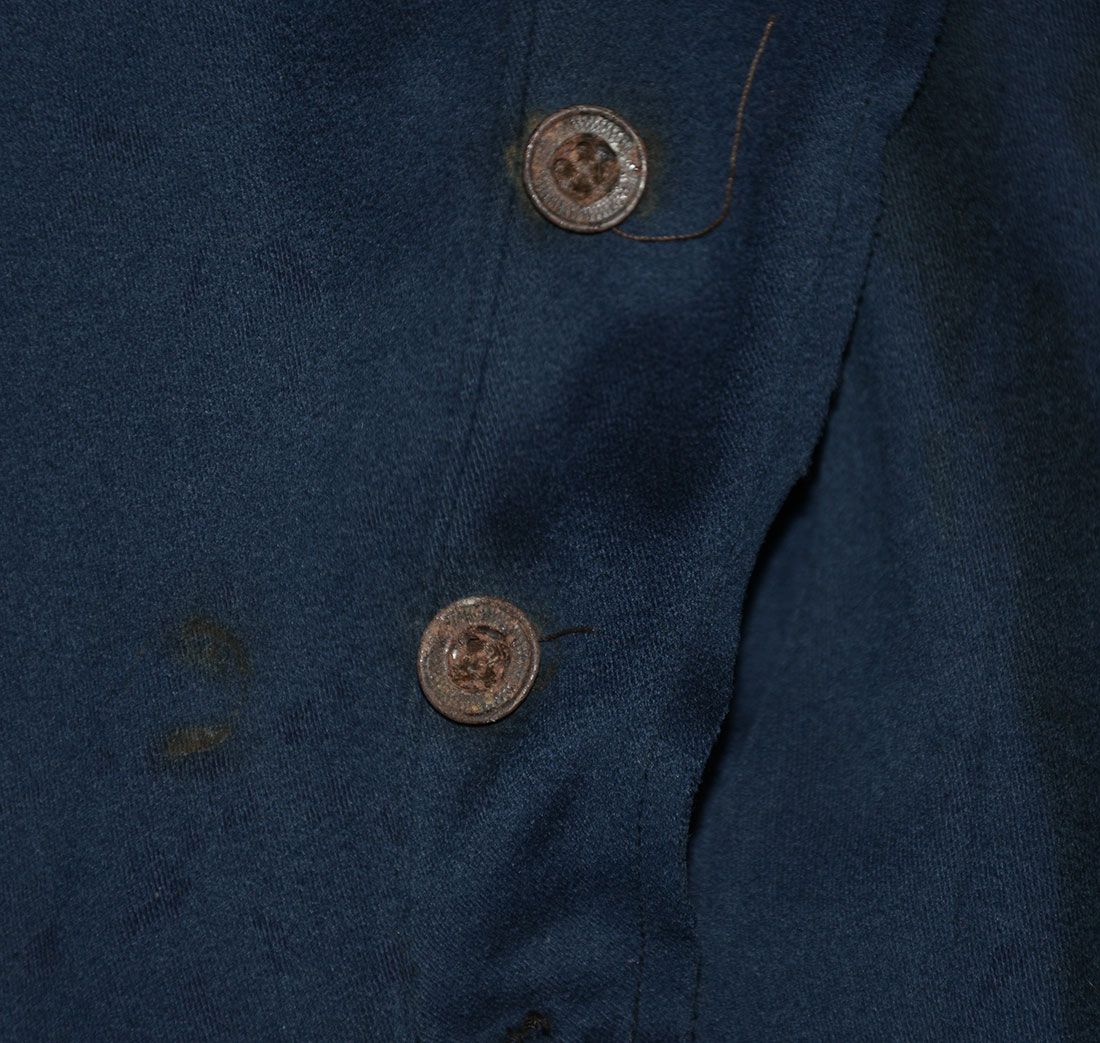

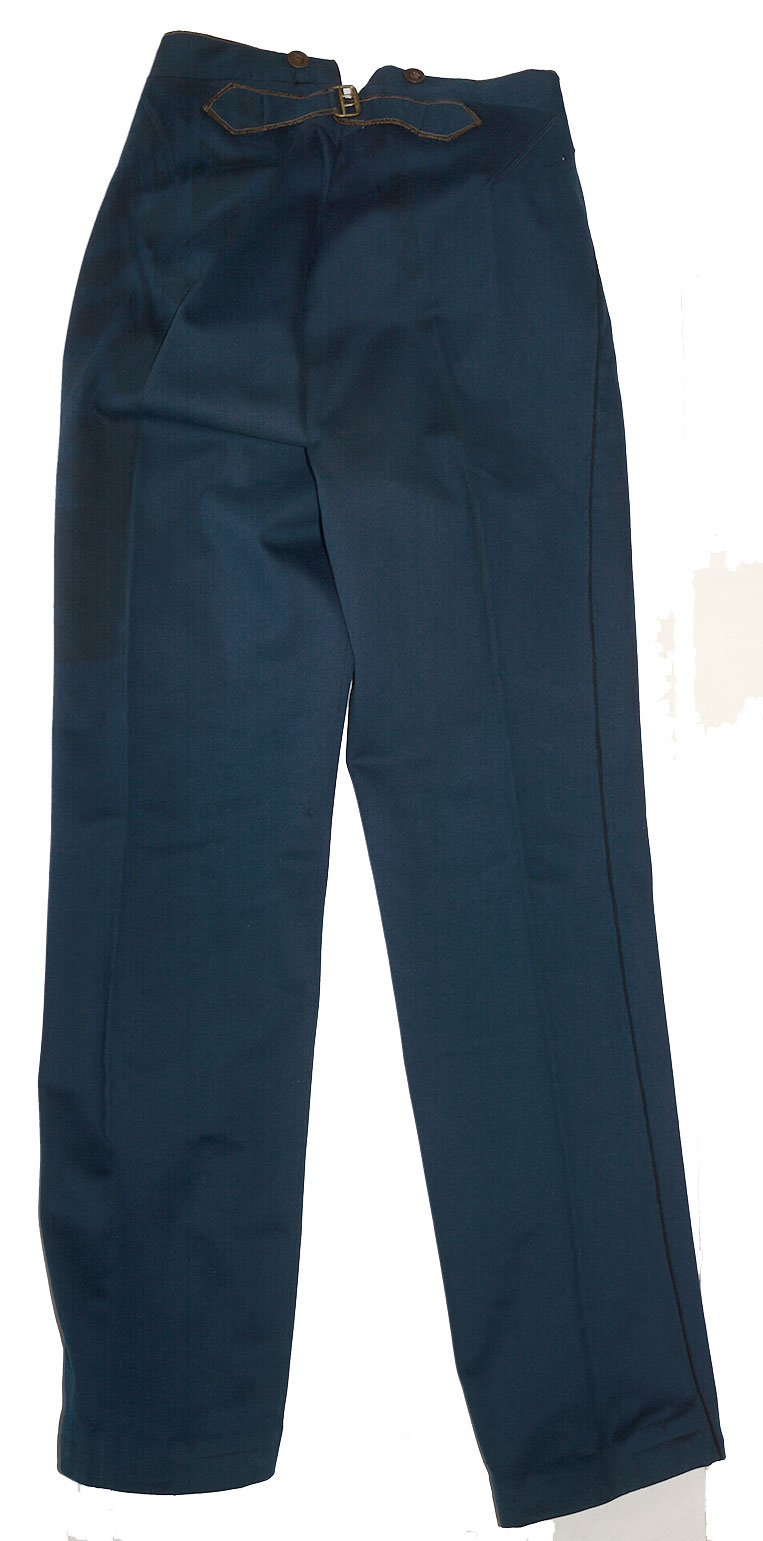
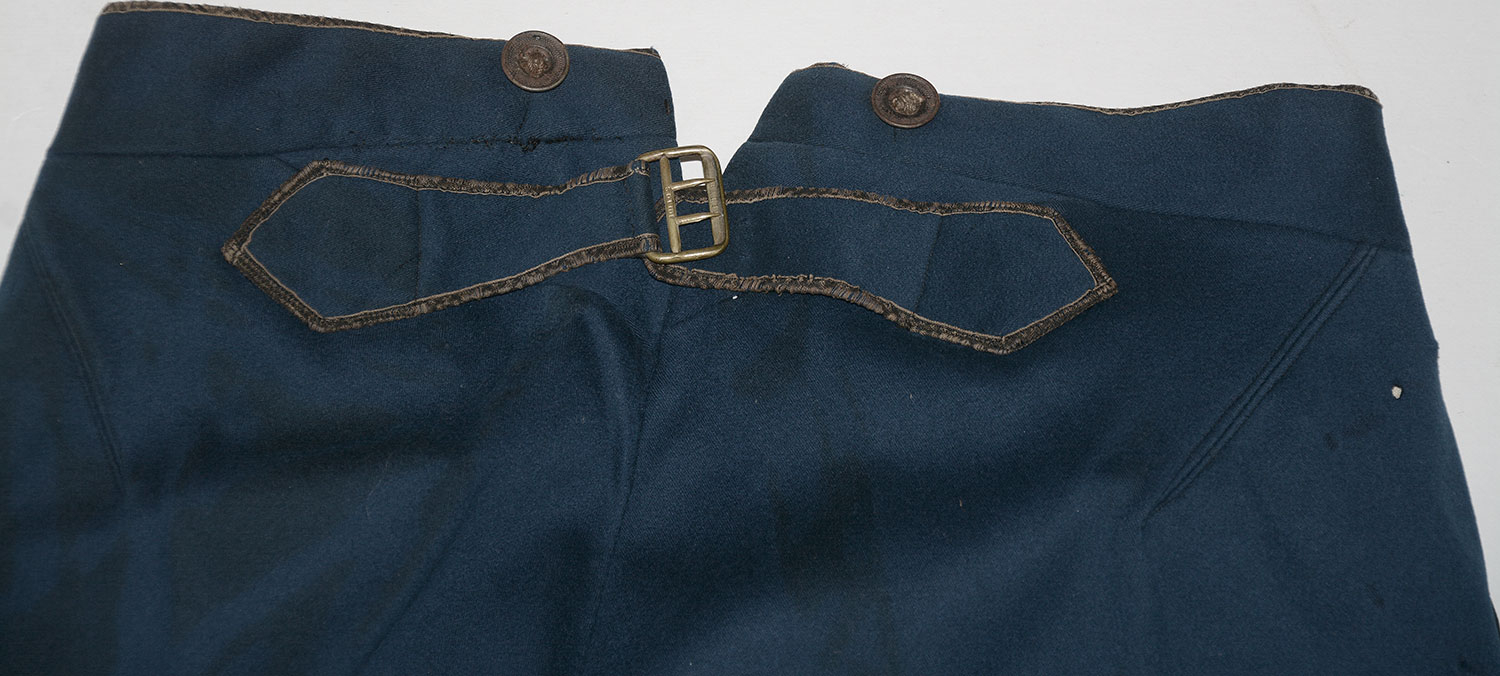
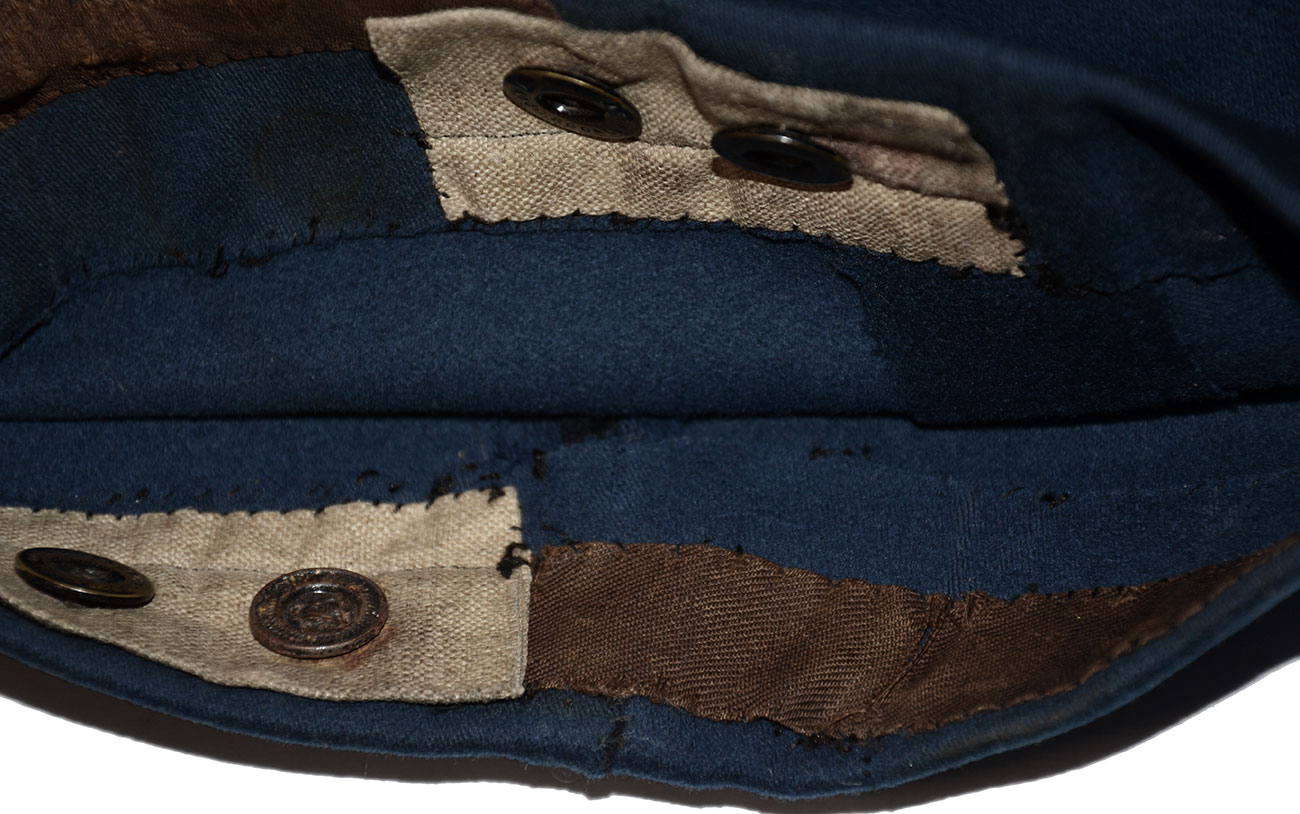
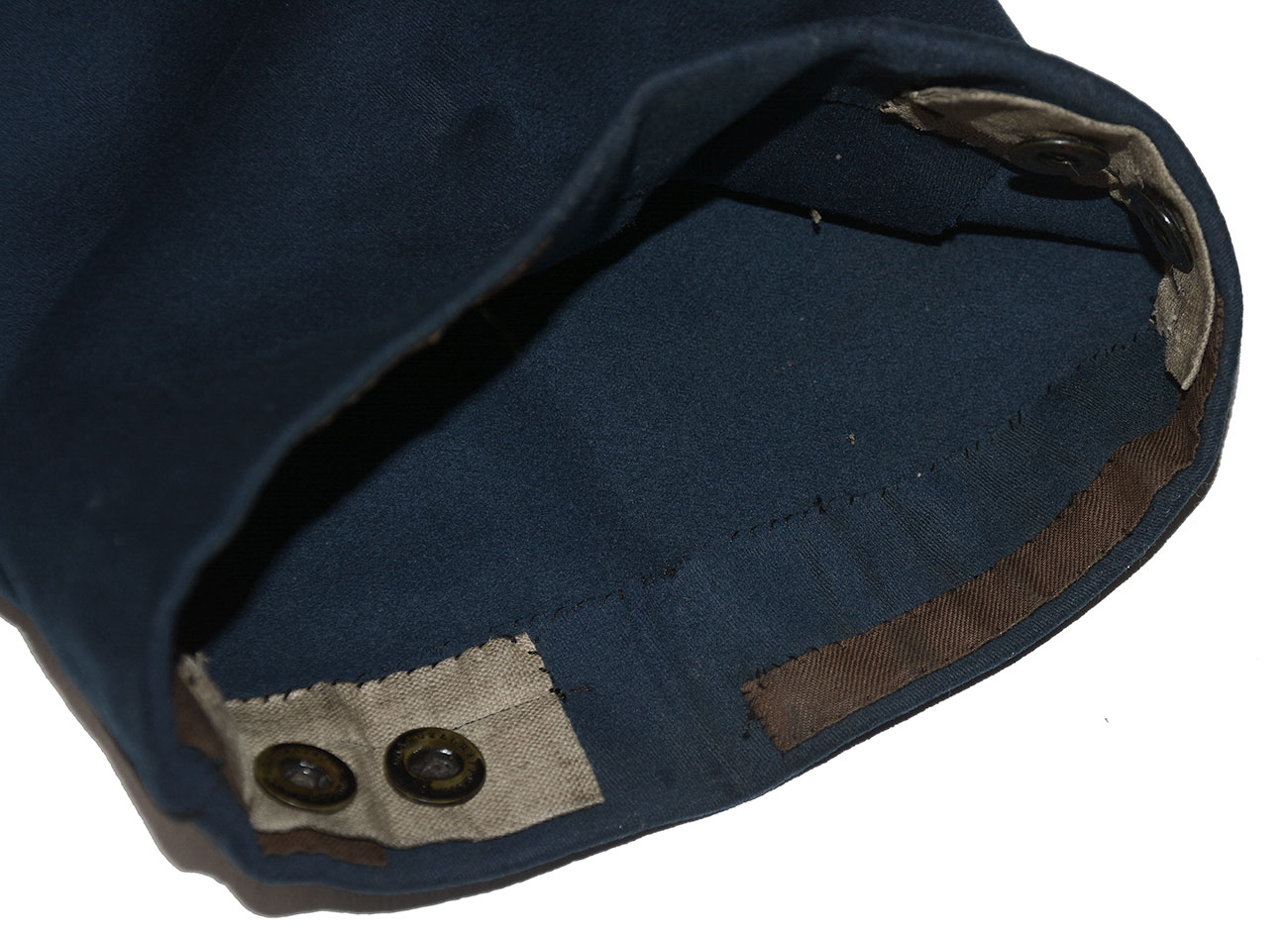

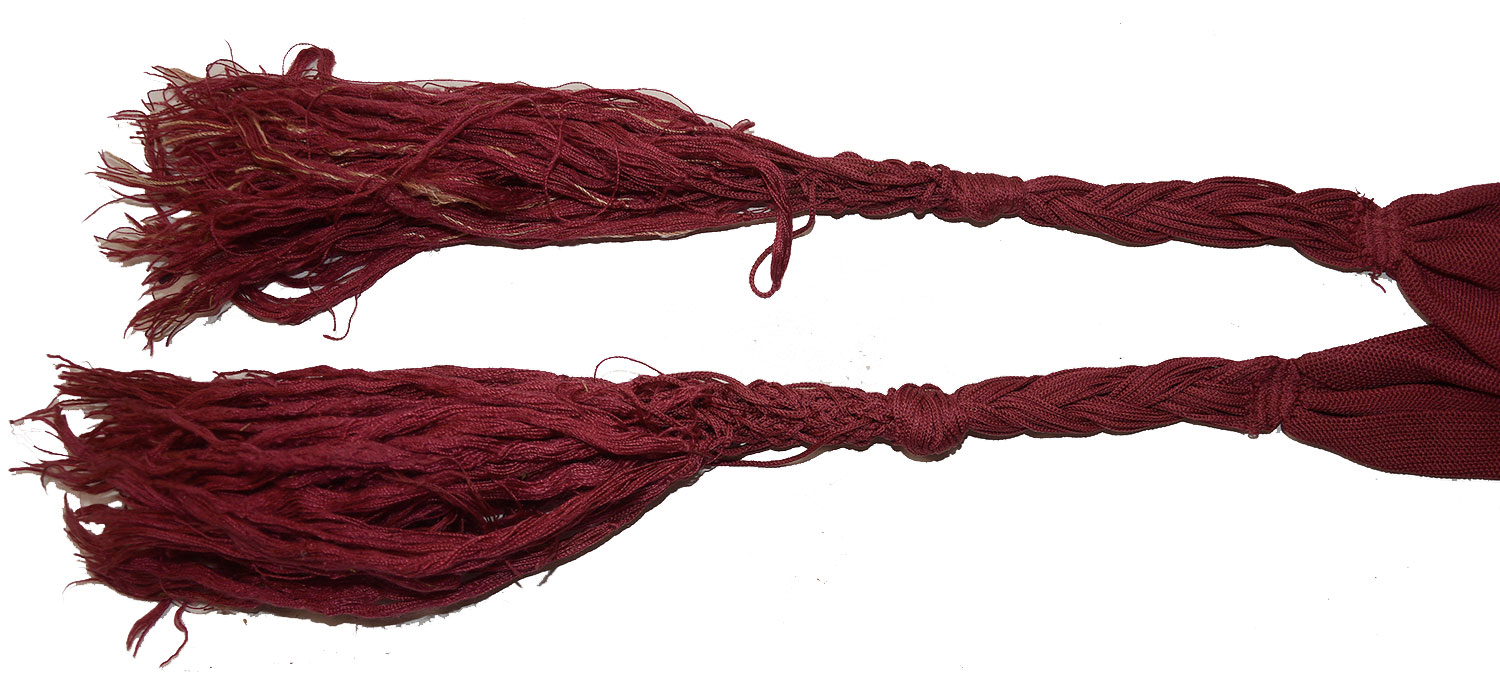
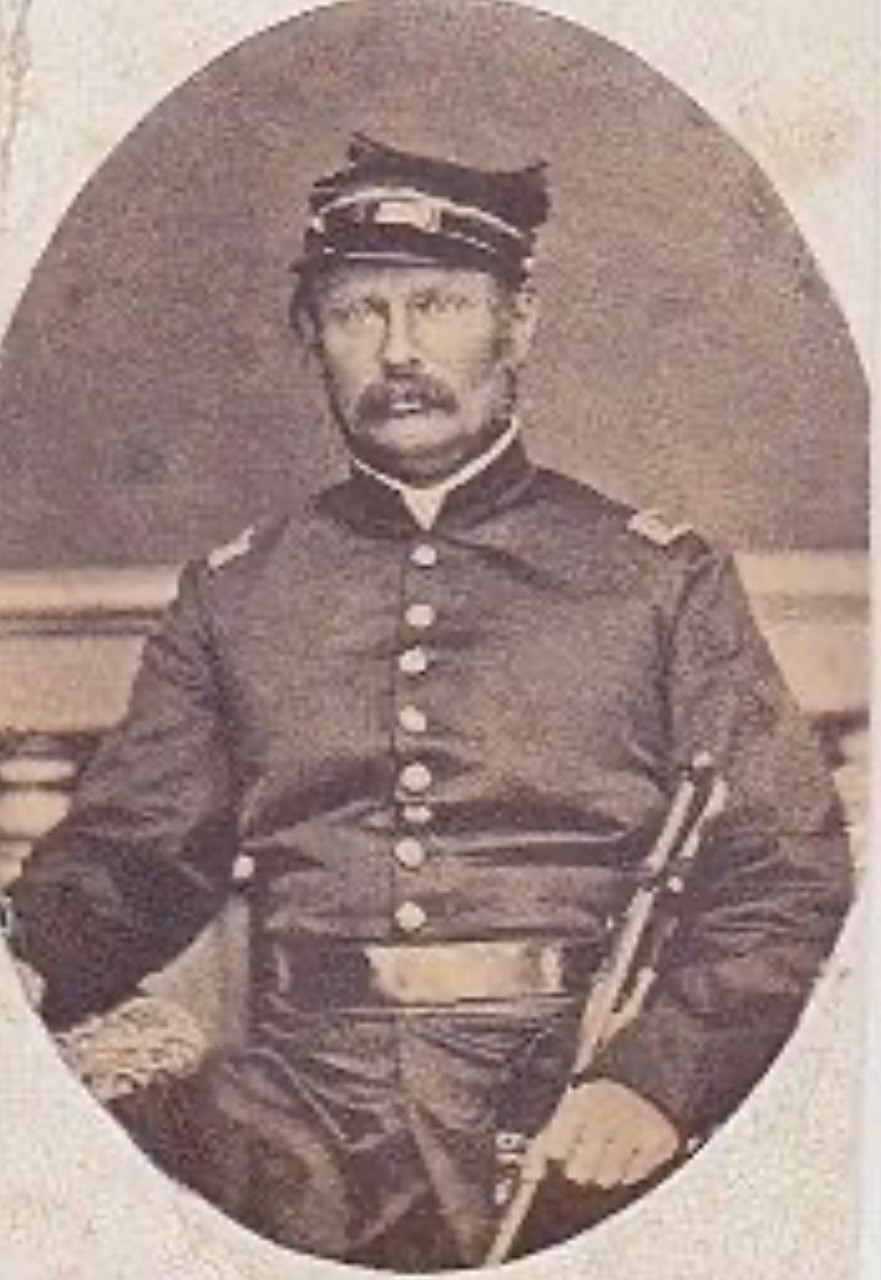
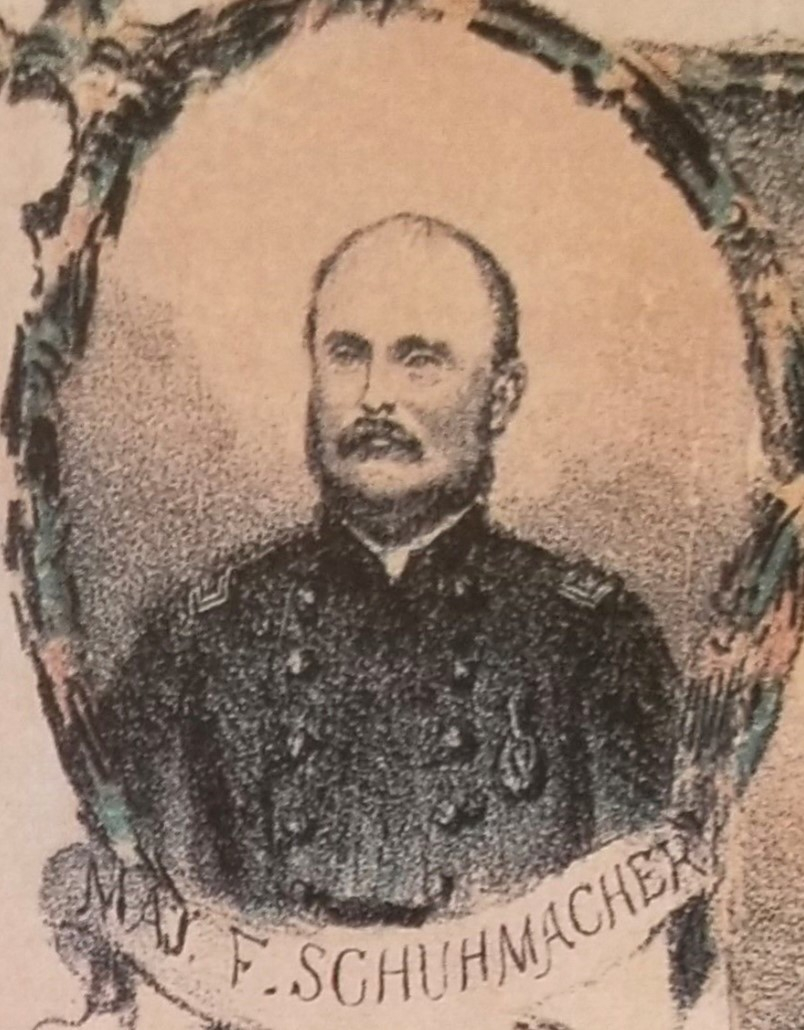
$13,500.00
Quantity Available: 1
Item Code: 1268-304
Shipping: Determined by Method & Location of buyer
To Order:
Call 717-334-0347,
Fax 717-334-5016, or E-mail
This Union infantry captain’s frock coat, trousers and sash are in excellent condition and were worn by Frederick Schumacher of Milwaukee during his service with the 6th Wisconsin. Born in Denmark in 1817, Schumacher married in 1847 and emigrated with his wife and one son in 1848. He became a U.S. citizen in 1853 and the family had increased to five children by 1860, when the census picks them up in Milwaukee where he was working as a surveyor. He enrolled at age 42 in the army April 27, 1861, in a company being organized by Capt. Lindwurm. He was mustered in for three years as a 1st Lieutenant of Co. F under Lindwurm in the 6th Wisconsin as of July 16 and after Lindwurm was discharged in December Schumacher was promoted to Captain of the company with his commission dated Dec. 11, 1861. Schumacher would have worn the uniform at both ranks, changing only the shoulder straps to reflect his new rank. The single-breasted officer’s frock coat, light blue trousers with dark blue cord piping, and crimson sash were the same for line officers. He continued to serve at this rank in the 6th until he was discharged for promotion to Major in the 21st Wisconsin, officially on July 16, 1862, though his resignation was apparently not signed until July 18 and he was not officially “honorably discharged” until July 24. He was remembered by fellow soldiers as a strict disciplinarian, but affable, occasionally comic in his accented English, and was noted for his singing voice, which must have made camp life a little more tolerable.
He is listed as present on all muster rolls until he was discharged and would thus have left Wisconsin with the regiment on July 28,1861, reaching Washington on Aug. 8. They were posted to a camp on Meridian Hill and became part of King’s Brigade, which moved to the Chain Bridge on Sept. 3 and did picket and guard duty at Camp Lyon until March 1862. He was with them when they took part in the advance on Manassas March10-16, the advance to Falmouth April 9-19, followed by duty at Falmouth and Fredericksburg, which included McDowell’s Advance on Richmond, March 25-29, and operations against Jackson June 2-11.
Schumacher’s name is in brown ink on the back of a hanging tab inside the collar of the frock coat. The tab is detached on one end, but firmly in place. The uniform is regulation, in excellent condition, solid, and displays very well with good deep blue color to the coat, with bright Infantry-I eagle buttons all in place- nine large on the front, four on the rear, and three small on each non-functional cuff. The collar is a typical low standing collar about 1-3/8” tall. The coat is quilted in the body and lined in the skirts with a green fabric, and with white in the sleeves. There is a single pocket in the left breast and two in the tails, accessible from the exterior. The double-row, bullion embroidered shoulder straps with light blue wool centers are in place. The bullion has oxidized to a silver gray, but still shows alternating groups of dead and bright, and there are just one or two loose bullion strands.
The coat was fashionably styled with 9-1/2 wide sleeves at the elbow to give a good billow, and the waist fitted with a flat brass hook and latch buckle to preserve a trim waist. (This is anchored on each side under a thin leather reinforcement on the inside of the lapel, pierced for the two bottom buttons on the wearer’s left. Both parts of the buckle are there, but the left portion, the flat hook, pulled out of the left lapel, parting the stitching of the leather reinforcement to the coat lapel. Everything is still there, however, and it could easily be resewn.
The trousers are regulation light blue with a narrow dark blue cord running down the outer seam of both legs. Suspender, waistband, fly and instep-strap buttons are tinned iron, with one period replacement suspender button, one missing from a cross strap and another from the fly. The waist is fitted with six suspender buttons. The waist is tightened by a small adjusting belt with brass frame buckle at the rear. The waist is fastened by two buttons on the waist band and short cross strap with buttonhole for a button that is now missing. The fly was fastened by four button, three of which are present. The bottom one being missing and leaving a rust stain inside and the others showing some surface rust. Two instep strap buttons are present inside each side of the cuffs. The waist band is lined, which extends down about 4 inches. The pockets are square along the top. Both are in place, as is a small watch pocket on the right. One of the pocket bags shows a rust stain from one of the tinned iron buttons. The color is very good overall. There is some soiling evident on the left hip and upper leg that appears to be from storage, with the trousers being folded flat and exposed to dirt or lying against something and would likely clean. There are a very few moth nips and some moth tracking, mostly on the upper right below the waist band and on the lower left cuff, but nothing egregious and not particularly needing repair for structural or even cosmetic reasons. The seam on the underside of the crotch is open for a short distance and could be easily closed up, but does not show.
The sash is 108” long, including a 13” fringe at either side. The body of the sash is a single thickness, 4” wide. The ends are made without the usual turk’s head knots formed over wood moulds. In this case the ends of the sash extend into some narrow cords 5” long that are then knotted and opened to from a loose fringe extending another 6” or so. As with the coat and trousers it would have been worn as both lieutenant and captain by Schumacher.
Schumacher’s service after leaving the 6th was short and tragic. He had been offered a major’s commission on July 10, 1862, and after tendering his resignation seems to have departed to help organize his new regiment as the 6th headed off on a reconnaissance to Orange Court House on July 24. The 21st had been organized at Oshkosh, WI, and was officially mustered in for three years on Sept. 5, 1862. They left the state for Cincinnati, Ohio, on September 11, making their way to Covington, to cover Cincinnati, and then Louisville, KY, on Sept. 15, where they were equipped for the field and on duty until October 1 as part of the 28th Brigade in Rousseau’s Division of the Army of the Cumberland. This took place during Braxton Bragg’s Confederate Heartland Offensive in Kentucky and they were called into the field to serve under Buell in pursuit of Bragg and were thrown into action at Perryville on October 8. The battle is regarded as a tactical defeat but strategic victory for Union forces since Bragg eventually withdrew from the state, though with both sides suffering a high percentage of casualties. The 21st Wisconsin in particular paid a heavy price, losing 179 in killed, wounded, and missing. A regimental history of 21st simply states that, “the regiment was placed, erroneously, about a hundred yards in front of the left of the main line, in a position between the two armies, and in consequence, suffered from the fire of both lines. From this position that, the regiment was quickly driven back to the rear of our line, with severe loss.” Schumacher fell early in the engagement, hit multiple times. An October 30, 1862, newspaper article from mentions the return of his body to Milwaukee and a Nov. 5 article in a Viroqua, Vernon County paper mentions his funeral. His wife seems to have remarried about a year later, also to a surveyor, likely a friend of her late husband, with a view to caring for the family.
This is a very good looking uniform grouping until recently on display in the Texas Civil War Museum. [sr][ph:L]
~~~~~~~~~~~~~~~~~~~~~~~~~~~~~~~~~~~
THIS ITEM, AS WITH ALL OTHER ITEMS AVAILABLE ON OUR WEB SITE,
MAY BE PURCHASED THROUGH OUR LAYAWAY PROGRAM.
CLICK HERE FOR OUR POLICIES AND TERMS.
THANK YOU!
Inquire About CAPTAIN’S FROCK COAT, TROUSERS AND SASH OF FREDERICK SCHUMACHER 6th WISCONSIN; LATER KIA AS MAJOR 21st WISCONSIN AT PERRYVILLE
Most Popular
Historical Firearms Stolen From The National Civil War Museum In Harrisburg, Pa »
Theft From Gravesite Of Gen. John Reynolds »
Selection Of Unframed Prints By Don Troiani »
Fine Condition Brass Infantry Bugle Insignia »
British Imported, Confederate Used Bayonet »
Scarce New Model 1865 Sharps Still In Percussion Near Factory New »
featured item
1863 PATTERN US CAVALRY GUIDON FROM THE 1st CONNECTICUT CAVALRY
This cavalry guidon was formerly in the personal collection of Jim Stamatelos, well known Civil War collector, dealer, and major contributor of items illustrated in the Time-Life volume “Echoes of Glory:” Arms and Equipment of the Union.” We… (433-14). Learn More »


